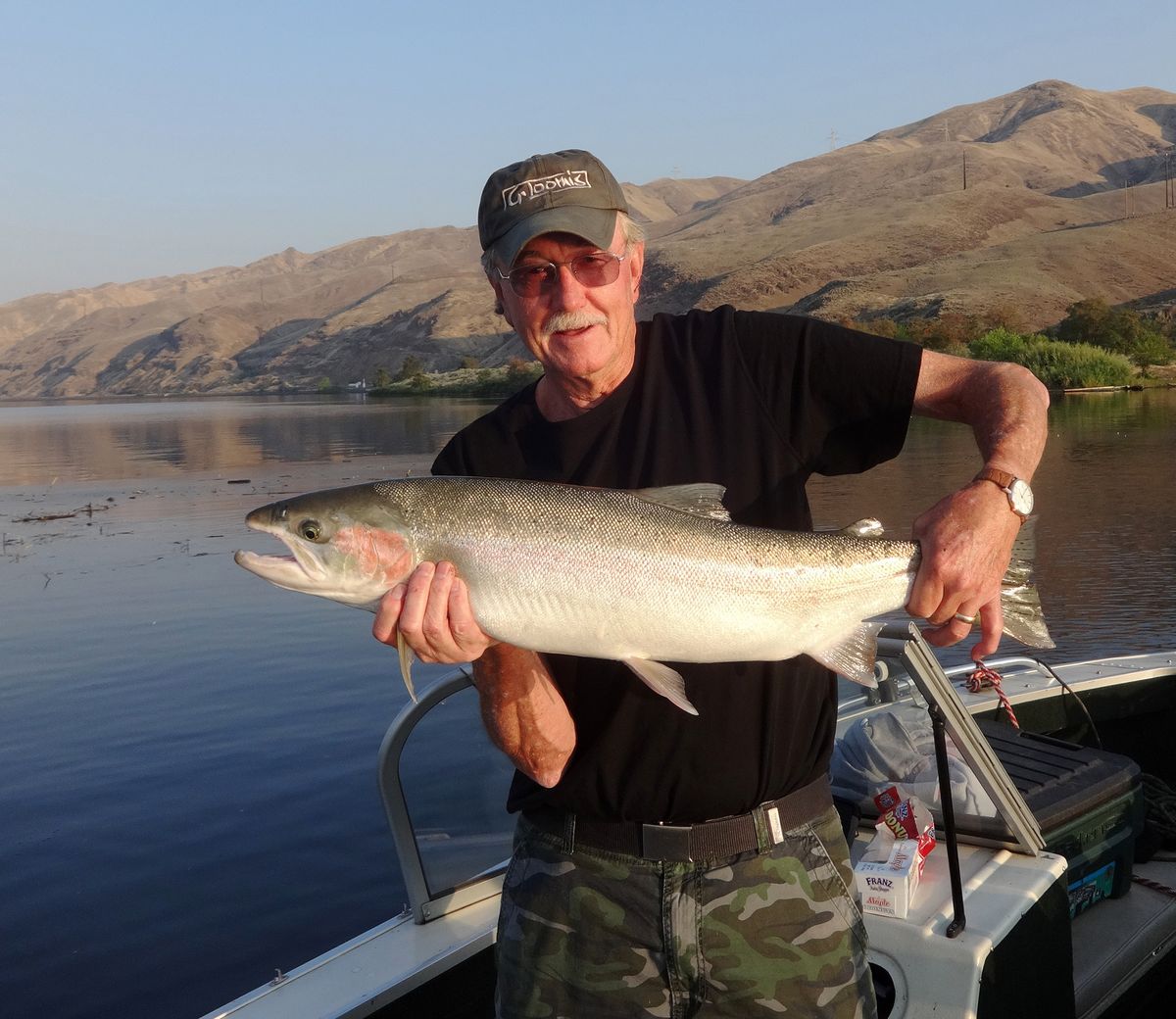Cautious handling a must during catch- and-release steelhead fishing

If there’s a consensus about anything in Northwest fishing circles it’s that steelhead and salmon deserve the highest respect. Their migrations up and down natal streams and survival in the predator-infested nightmare of the ocean set them apart in the angler’s heart.
But some fishermen are convinced, especially this time of year near the confluence of the Snake and Clearwater rivers, that we could show more class.
“Since the Aug. 1 opener of the lower Clearwater River for steelheading, we have been catching a few fish on every outing,” writes Rick Itami. “For me, every steelhead I have landed has been wild and needed to be released immediately.”
Because of the warm 72- to 75-degree water in the Snake, Itami says he often must devote more time to reviving a fish than he would with a fish caught in the Clearwater where releases from Dworshak Reservoir cool the waters to the mid-50s.
“We have witnessed some anglers just throwing fish back into the water without first reviving them and some of these fish later can be seen floating belly-up,” he said, repeating observations anglers have had for years.
“These are healthy, beautiful fish that look like they are just out of the saltwater and fight like crazy. It’s a terrible waste to see these fish perish because of improper handling during release.
“Please remind your readers to make sure fish are revived and can swim away on their own before releasing them.”
Joe DuPont, Idaho Fish and Game Department regional fisheries manager in Lewiston is aware that some steelhead are dying after they’re released.
First, he said, “We encourage anglers to handle all fish sensibly when they will be released back to the water.” The Idaho fishing regulations pamphlet on pages 53-54 lists ways of improving the survival of released fish, he added.
On the other hand, he suggested that the number of dead steelhead isn’t as high as some anglers believe.
“When these bright fish die, they lie on their side and become very easy to see,” DuPont said. “People will often see the same fish over and over and assume there are a bunch of them.
“Also, when somebody clearly identifies a dead steelhead, it isn’t unusual for them afterwards to assume every dead fish they see to also be a steelhead. Many of these fish are suckers, catfish or carp.
“At times, we have also observed chinook fillets thrown in the river by tribal members which can also be mistaken for dead steelhead.
“So, when people report seeing dead steelhead all over the place, that definitely is an exaggeration.
“I have fished this catch-and-release season many times and I can assure you that these practices aren’t killing hundreds of steelhead.”
DuPont refers to a recent four-year study on the Grande Ronde River that found catch-and-release mortality for steelhead ranged from 1 to 2 percent. Creel surveys the past couple years indicate that fewer than 1,000 steelhead are typically caught and released in this fishery.
“Using a conservative 3-percent mortality rate, that would amount to 30 fish that die from catch-and-release practices,” he said. “I suspect it is lower than that.
“That all being said, I think it is good to remind anglers to handle fish wisely when practicing catch-and-release as this can make a difference in whether a fish will die or not.”
Washington steelhead managers take a more cautious and regulated view. Wild steelhead caught in Eastern Washington must be unhooked and released without being removed from the water, according to state fishing regulations. Capturing a photo memory of the catch must be quick and low to the water, a parameter most anglers follow to help assure survival of the fish after it’s released.
Idaho isn’t so particular about handling wild steelhead. “Idaho Fish and Game thinks it’s important for anglers to be able to take pictures of fish (including steelhead) as this will enrich their fishing experience and enhance their memories well into our future,” DuPont said when I queried him about the differences in state rules. “This is why we give the directions in the fishing regulations pamphlet on how to release fish and properly hold a fish for a photograph. We do not believe holding fish out of the water in this manner will increase their mortality.” Sturgeon are an exception. They cannot be removed from the water in Idaho.
Guidelines Idaho offers for taking pictures of fish that will be released include:
• Use non-abrasive nets to reduce loss of mucous and scales from the fish.
• Wet your hands before touching the fish.
• Leave fish in the water while removing the hook. Holding fish upside down in the water often makes them easier to handle.
• If the hook is too deep to be easily removed, cut the leader. This will give the fish the best chance to survive.
• If the fish is exhausted, hold it in a swimming position in the water and gently move it back and forth until it is able to swim away.
If you must take a wild steelhead or salmon out of the water for a photo (legal in Idaho, but not necessarily in Washington):
• Have camera ready and the shot framed before removing the fish from the water.
• Support the fish with both hands as you gently lift it.
• Hold the fish over the water so it won’t strike a hard surface if it struggles and falls.
• Hold the fish out of the water only as long as needed to take the picture.
Some anglers go a step further and suggest:
• Hold a fish out of water only as long as you can hold your breath.
Contact Landers at (509) 459-5508, or email richl@spokesman.com.